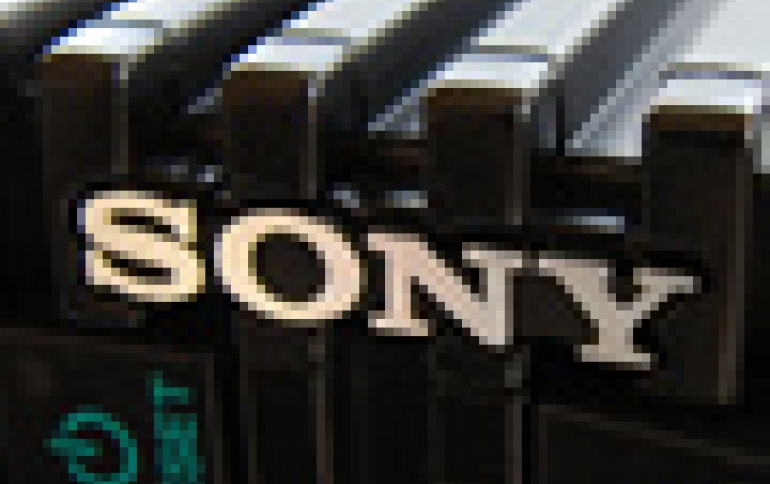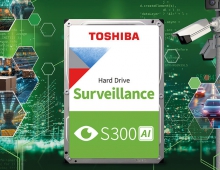
Sony to Acquire Toshiba's Cell Processor Semiconductor Fabrication Facilities, Strengthen Image Censor Capacity
Toshiba and Sony have signed a non-binding memorandum of
understanding expressing their intent to transfer from Toshiba to
Sony the semiconductor fabrication facilities owned by Toshiba and
operated by Nagasaki Semiconductor Manufacturing Corporation (NSM), a joint venture among Toshiba, Sony and Sony Computer Entertainment Inc. ("SCEI").
Following the contemplated transfer, the companies plans to terminate
their NSM joint venture relationship.
NSM, which was established in March 2008 and is located in the Nagasaki Technology Center of Sony Semiconductor Kyushu Corporation (SCK), has been manufacturing the high-performance "Cell Broadband Engine" processor, the graphics engine "RSX" and other high-performance semiconductors and leading-edge SoC (system-on-a-chip) for applications in digital consumer products of Toshiba and Sony. The facilities to be transferred would be the fabrication facilities and equipment for the 300 mm wafer line located within the Nagasaki Technology Center purchased by Toshiba from Sony and SCK and leased to NSM in 2008 and other facilities that Toshiba and Sony will agree to transfer among those in which Toshiba invested in connection with the operation by NSM after the purchase.
After due diligence on the facilities to be transferred and continuing negotiations, Toshiba and Sony aim to execute definitive agreements (with respect to the contemplated transfer of the semiconductor fabrication facilities) as soon as possible before the end of the fiscal year ending March 31, 2011. Thereafter, Toshiba and Sony aim to complete the transfer early in the fiscal year ending March 31, 2012, subject to any necessary government approvals.
The move is part of Toshiba's effort to reconstruct its System LSI business, with the goal of boosting profitability.
Toward accelerating decision-making speed and optimizing use of management resources, Toshiba's systen LSI division will be reorganized into two: the Logic LSI Division, responsible for cutting-edge SoC (system-on-chip) fabricated on 300mm wafer fabrication lines; and the Analog and Imaging IC Division, which supplies key components for a wide range of products.
The Logic LSI Division will promote a flexible manufacturing strategy responsive to demand volatility by combining use of its own production line with outsourcing. The division will expand outsourcing of cutting-edge products, including 40nm products, to multiple foundries from fiscal year.
The Analog and Imaging IC Division will concentrate on analog ICs and imaging ICs, particularly CMOS image sensors, and use existing production lines at Oita Operations, including 300mm wafer lines, and Iwate Toshiba Electronics Co., Ltd. The main focus will be general-purpose products, allowing the division to streamline its production lines. This approach is expected to support business expansion and to enhance profitability.
Sony will also invest approximately 100 billion yen in Sony Semiconductor Kyushu Corporation's Nagasaki Technology Center (Nagasaki TEC) in the fiscal year ending March 31, 2012, to increase the production capacity for CMOS image sensors.
This investment plan includes (i) the transfer of the semiconductor fabrication facilities from Toshiba (previously mentioned) , (ii) refurbishment of a part of the above semiconductor fabrication facilities into new wafer lines capable of manufacturing CMOS image sensors, and (iii) refurbishment and equipment of a part of production facilities at Nagasaki TEC Building 3 for wafer processing to differentiate Sony's CMOS image sensors with Sony's independently developed technologies. Through the investment plan, Sony will utilize a governmental subsidy (Japanese) to be provided by the Ministry of Economy, Trade and Industry in Japan.
Sony believes that these investments will strengthen the company's production capacity for "Exmor" and "Exmor R" CMOS image sensors in order to meet increased demand from markets such as those for smartphones and Digital Still Cameras.
In addition to the approximately 40 billion yen investment in Sony Semiconductor Kyushu Corporation's Kumamoto Technology Center (announced on September 1, 2010), Sony's total production capacity for CCD and CMOS image sensors will increase from the current level of approximately 25,000 wafers per month to approximately 50,000 wafers per month by the end of March 2012.
Toshiba is also planning to outsource output of some system chips to "rival" Samsung Electronics.
For new orders for the next financial year beginning in April, Toshiba will design cutting-edge system chips but will outsource production to Samsung, and maybe other foundries, to avoid costly capital investment outlays.
The Nikkei business daily said Samsung was chosen as it has advanced technologies and the ability to churn out large numbers of high-performance chips at low cost.
Samsung's system chips division has seen strong growth this year, driven by robust demand for mobile application processors and image sensors.
NSM, which was established in March 2008 and is located in the Nagasaki Technology Center of Sony Semiconductor Kyushu Corporation (SCK), has been manufacturing the high-performance "Cell Broadband Engine" processor, the graphics engine "RSX" and other high-performance semiconductors and leading-edge SoC (system-on-a-chip) for applications in digital consumer products of Toshiba and Sony. The facilities to be transferred would be the fabrication facilities and equipment for the 300 mm wafer line located within the Nagasaki Technology Center purchased by Toshiba from Sony and SCK and leased to NSM in 2008 and other facilities that Toshiba and Sony will agree to transfer among those in which Toshiba invested in connection with the operation by NSM after the purchase.
After due diligence on the facilities to be transferred and continuing negotiations, Toshiba and Sony aim to execute definitive agreements (with respect to the contemplated transfer of the semiconductor fabrication facilities) as soon as possible before the end of the fiscal year ending March 31, 2011. Thereafter, Toshiba and Sony aim to complete the transfer early in the fiscal year ending March 31, 2012, subject to any necessary government approvals.
The move is part of Toshiba's effort to reconstruct its System LSI business, with the goal of boosting profitability.
Toward accelerating decision-making speed and optimizing use of management resources, Toshiba's systen LSI division will be reorganized into two: the Logic LSI Division, responsible for cutting-edge SoC (system-on-chip) fabricated on 300mm wafer fabrication lines; and the Analog and Imaging IC Division, which supplies key components for a wide range of products.
The Logic LSI Division will promote a flexible manufacturing strategy responsive to demand volatility by combining use of its own production line with outsourcing. The division will expand outsourcing of cutting-edge products, including 40nm products, to multiple foundries from fiscal year.
The Analog and Imaging IC Division will concentrate on analog ICs and imaging ICs, particularly CMOS image sensors, and use existing production lines at Oita Operations, including 300mm wafer lines, and Iwate Toshiba Electronics Co., Ltd. The main focus will be general-purpose products, allowing the division to streamline its production lines. This approach is expected to support business expansion and to enhance profitability.
Sony will also invest approximately 100 billion yen in Sony Semiconductor Kyushu Corporation's Nagasaki Technology Center (Nagasaki TEC) in the fiscal year ending March 31, 2012, to increase the production capacity for CMOS image sensors.
This investment plan includes (i) the transfer of the semiconductor fabrication facilities from Toshiba (previously mentioned) , (ii) refurbishment of a part of the above semiconductor fabrication facilities into new wafer lines capable of manufacturing CMOS image sensors, and (iii) refurbishment and equipment of a part of production facilities at Nagasaki TEC Building 3 for wafer processing to differentiate Sony's CMOS image sensors with Sony's independently developed technologies. Through the investment plan, Sony will utilize a governmental subsidy (Japanese) to be provided by the Ministry of Economy, Trade and Industry in Japan.
Sony believes that these investments will strengthen the company's production capacity for "Exmor" and "Exmor R" CMOS image sensors in order to meet increased demand from markets such as those for smartphones and Digital Still Cameras.
In addition to the approximately 40 billion yen investment in Sony Semiconductor Kyushu Corporation's Kumamoto Technology Center (announced on September 1, 2010), Sony's total production capacity for CCD and CMOS image sensors will increase from the current level of approximately 25,000 wafers per month to approximately 50,000 wafers per month by the end of March 2012.
Toshiba is also planning to outsource output of some system chips to "rival" Samsung Electronics.
For new orders for the next financial year beginning in April, Toshiba will design cutting-edge system chips but will outsource production to Samsung, and maybe other foundries, to avoid costly capital investment outlays.
The Nikkei business daily said Samsung was chosen as it has advanced technologies and the ability to churn out large numbers of high-performance chips at low cost.
Samsung's system chips division has seen strong growth this year, driven by robust demand for mobile application processors and image sensors.





















